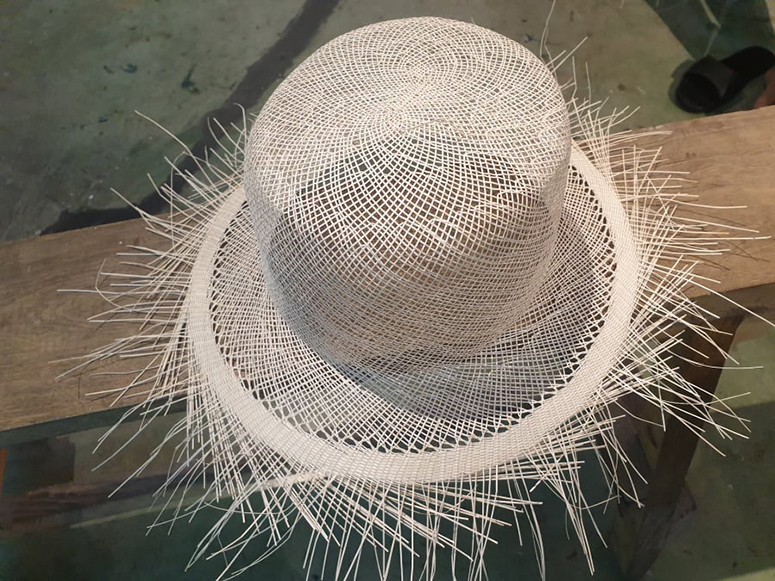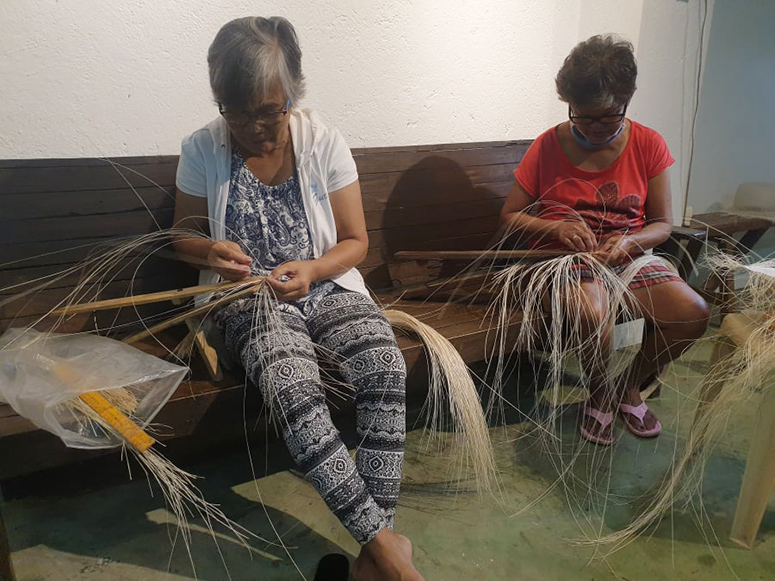A virtual field trip to Lucban
Education takes place beyond the proverbial four walls of a virtual classroom. One could head to an artist community at the foot of Banahaw, for starters. Project Space Pilipinas (PSP), an independent artist-run initiative and platform based in Lucban, Quezon Province, recently conducted a virtual field trip for homeschooled students to meet two lifelong weavers of the local traditional buntal hats.
PSP has been operating in its Lucban space since 2012, holding contemporary art exhibitions, artist talks, and educational projects for the local community since 2006. Led by founder and artist Leslie de Chavez, the initiative had been working on educational video documentation of the local paglalala industry. Though the project was paused because of the pandemic, de Chavez once again set up a shoot in PSP’s gallery space for this particular 2020 excursion.
The lucky students who attended the field trip were treated to numerous stories shared by Nanay Cora and Nanay Lita about their craft, the heritage of Lucban weaving, and their technique honed by decades of experience. The two demonstrated the finely meticulous process of transforming strands of fiber into masterfully-crafted hats that have captivated folks overseas in the 20th century. The students were likewise amazed, responding with a flurry of questions ranging from the materials to matters of livelihood.

The buntal hat production of Lucban was thriving in its 1980s heyday, with local buri palm plantations providing an abundant supply of fiber for weavers whose creations were exported internationally. The cottage industry waned in the ’90s and early 2000s as younger generations shifted to other forms of livelihood, and the industrial production of hats took over. While weaving buntal hats continues to be taught in senior high within Lucban, PSP’s initiative hopes to share these stories with other people around the Philippines.
“Importante ang ganoong klase na field trip or kaya experience although virtual siya, pero nakakatuwa na mayroon pa rin ‘wow factor’ sa kabataan,” said de Chavez. He recounts how even parents were paying close attention, and the shyer children in the class were more comfortable with asking questions over video. “Although virtual siya, firsthand pa rin ang experience.”
Eight months into the abrupt and unprecedented shift from the classroom to virtual learning, the educational system as we knew it is still trying to catch up. The notion of immediacy and engagement in virtual spaces is still being navigated and negotiated by students and teachers alike, on top of facing internet inaccessibility, emotional isolation, and the financial cost of tech. Still, it’s comforting to be reminded that there is still room for these candid encounters to take place.

“Ang ganitong klaseng approach sa educational aspect or sa pag-improve o pagdevelop ng creativity sa ating education, I think pwedeng i-take advantage ng mga teachers,” said Leslie. “Ang importante lang siguro is to extend doon sa mga teachers kung paano nila gagamitin creatively ang technology.” That, of course, includes utilizing resources to foster communication rather than hinder it.
When it comes to passing on these cultural practices and lived experiences, time is of the essence. All over the Philippines are master craftspeople carrying on these cultural handicrafts to the present, and these virtual field trips can connect artists, educators, and communities even across distances. Online, you could travel and meet craftspeople in Ilocos Norte, Bohol, and Zamboanga all in the span of a day, if you are able to reach out to resource people from local communities.
With digital technology as well, these field trips and conversations can also be saved as documentation, whether for research or educational materials. There’s something to be learned as well from the honest, illuminating, and often profound questions that come from a younger generation of students who are eager to learn, and in the process, learn the importance of remembering too.
Banner caption: The intricate process of weaving fibers



